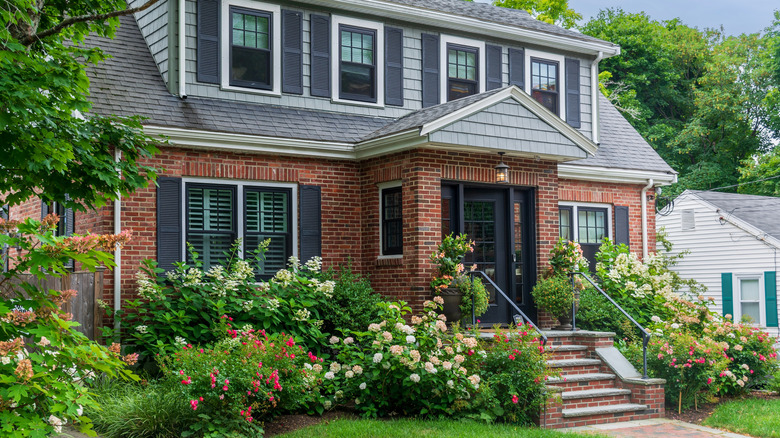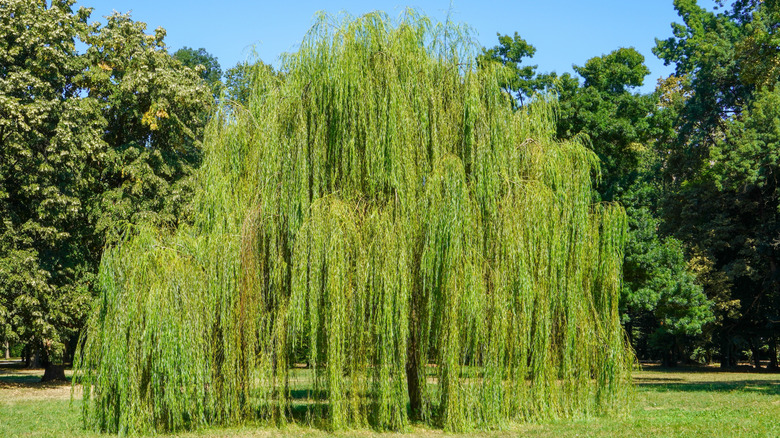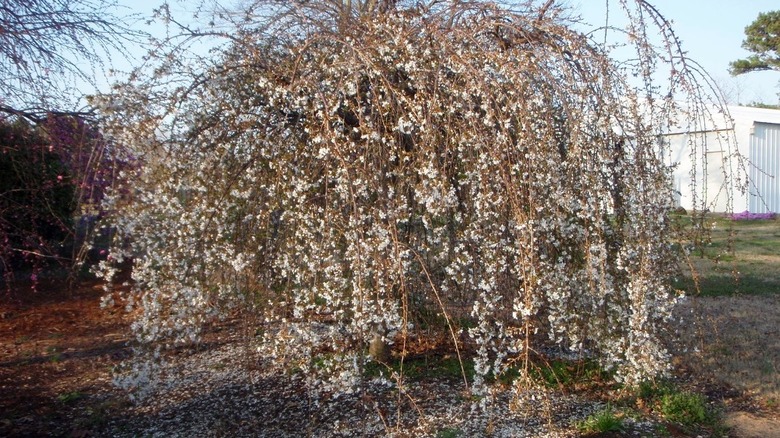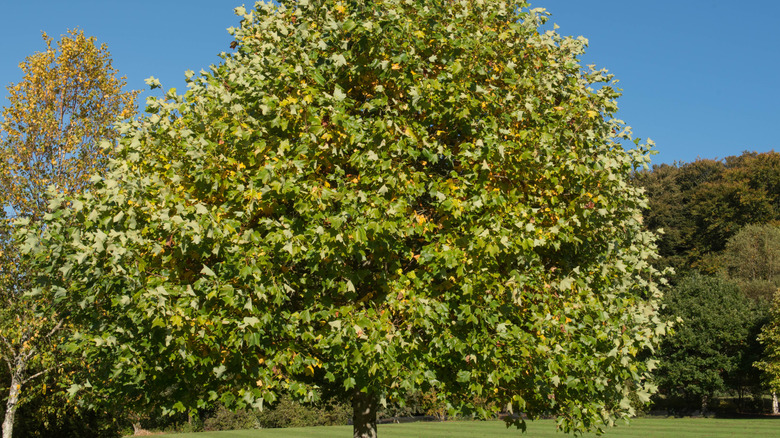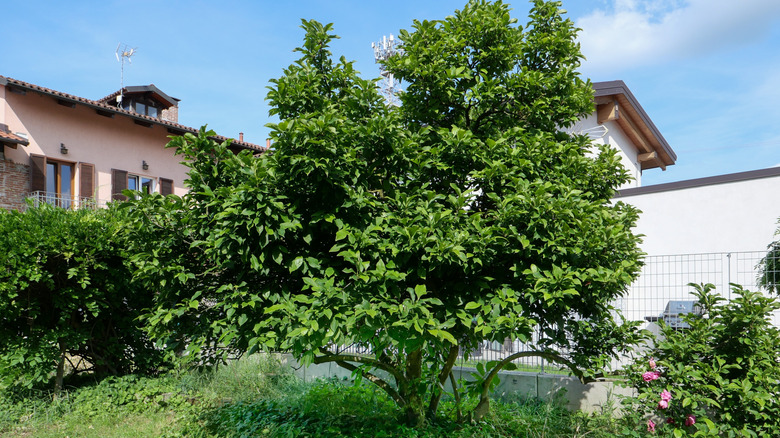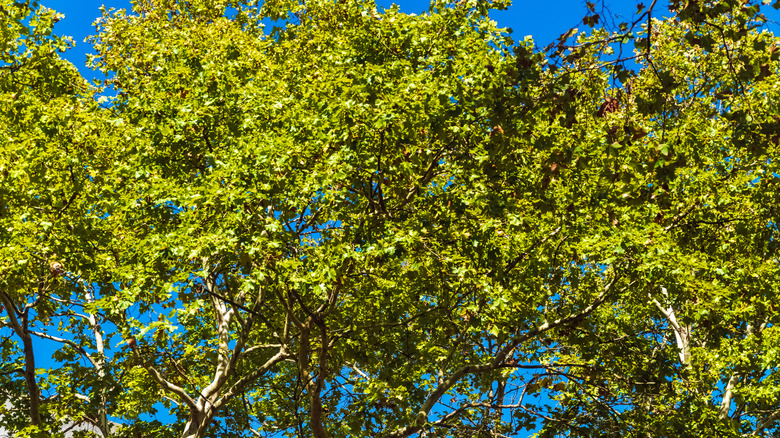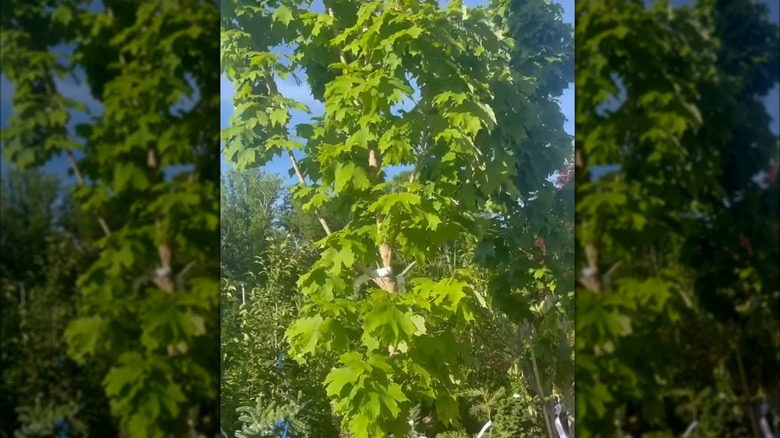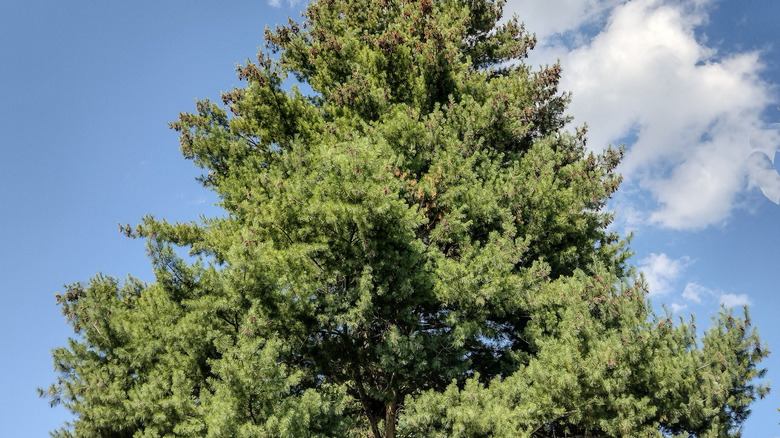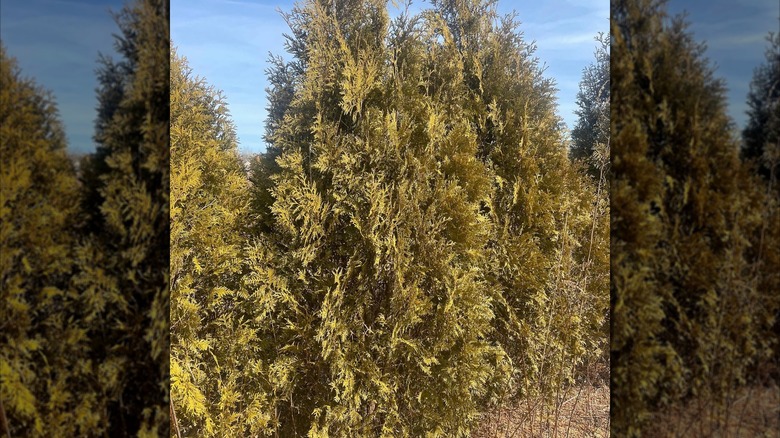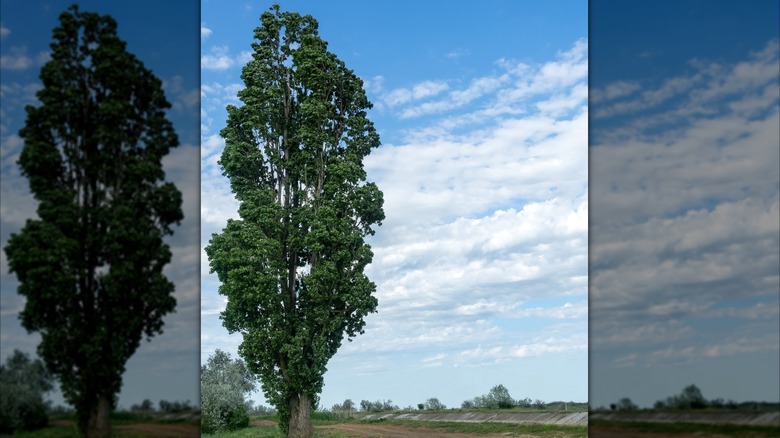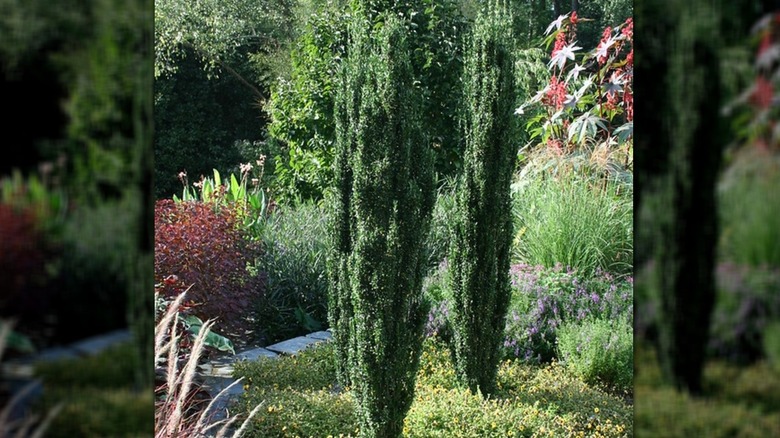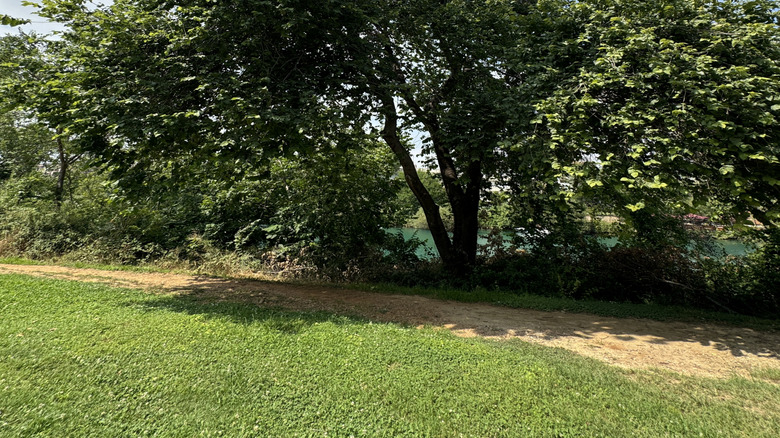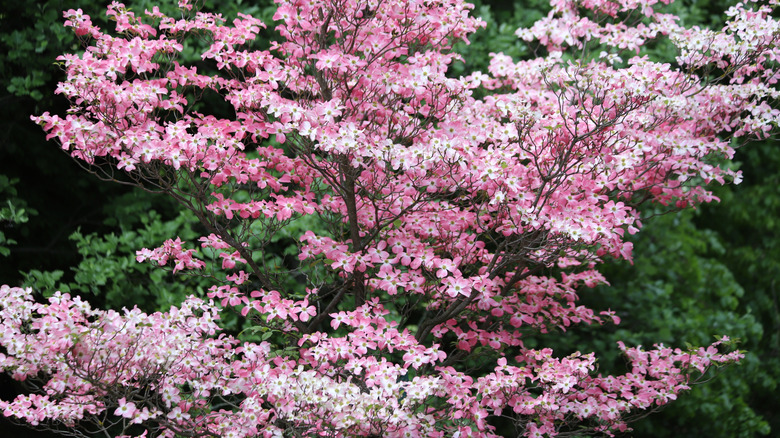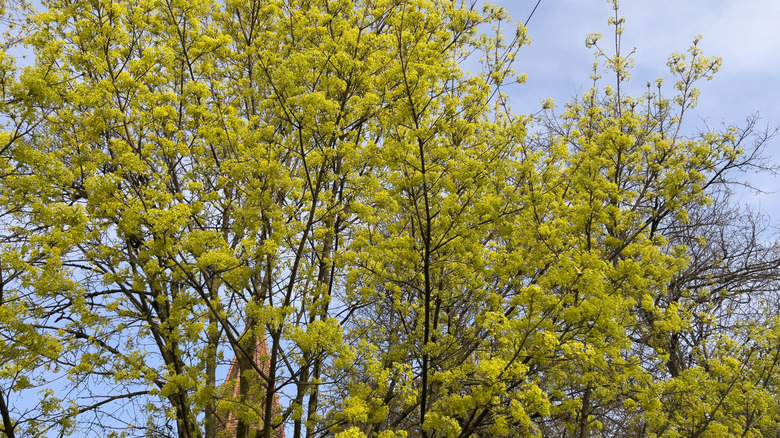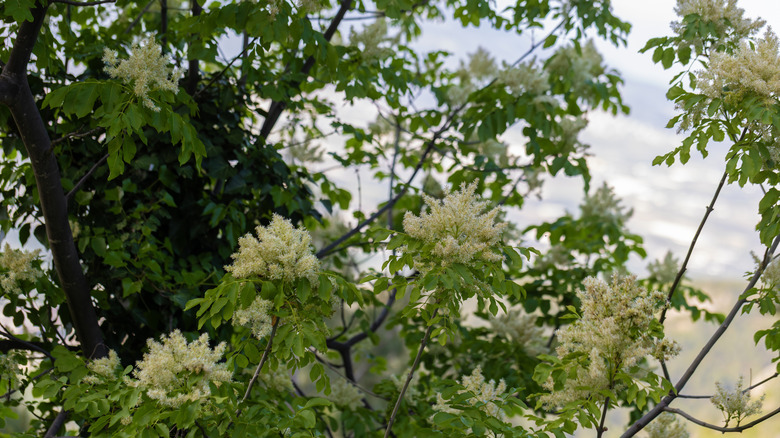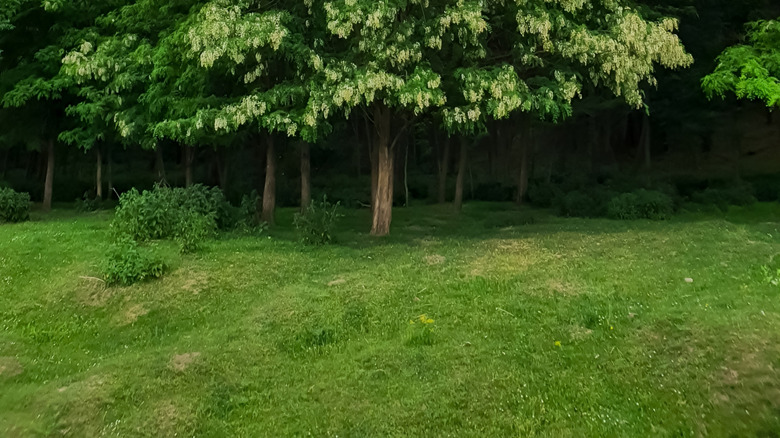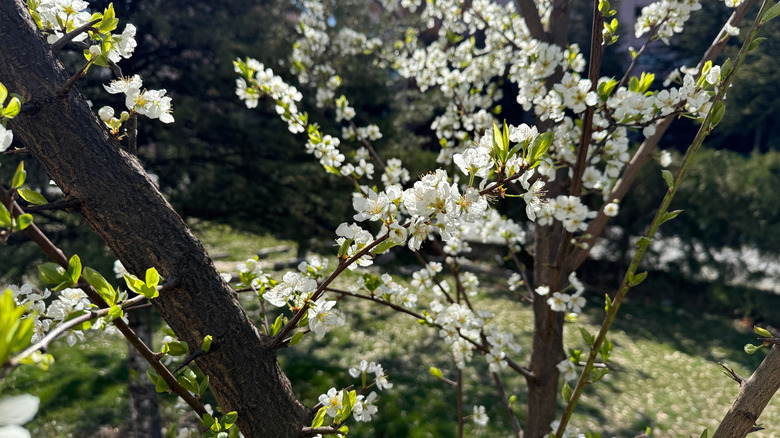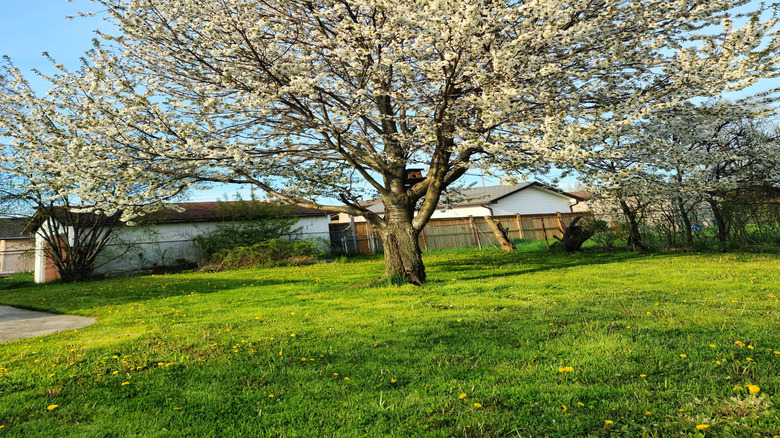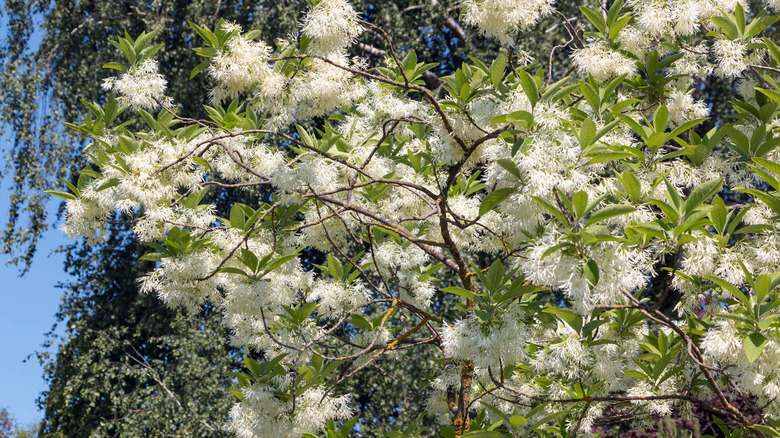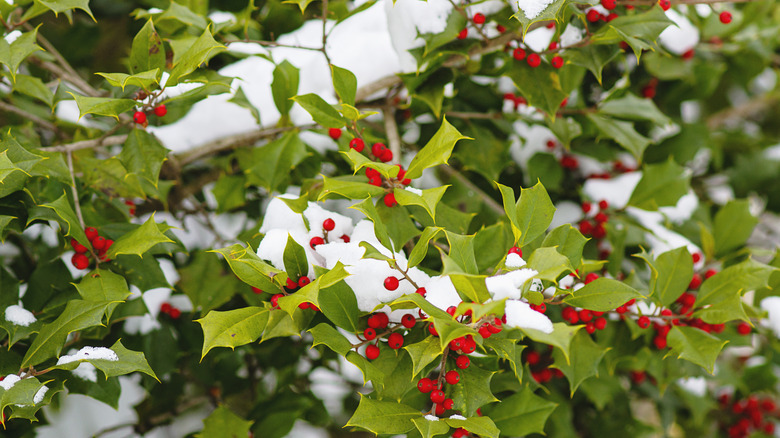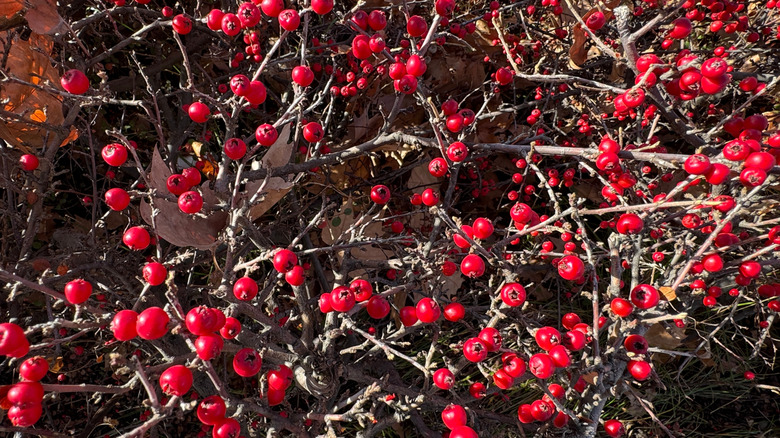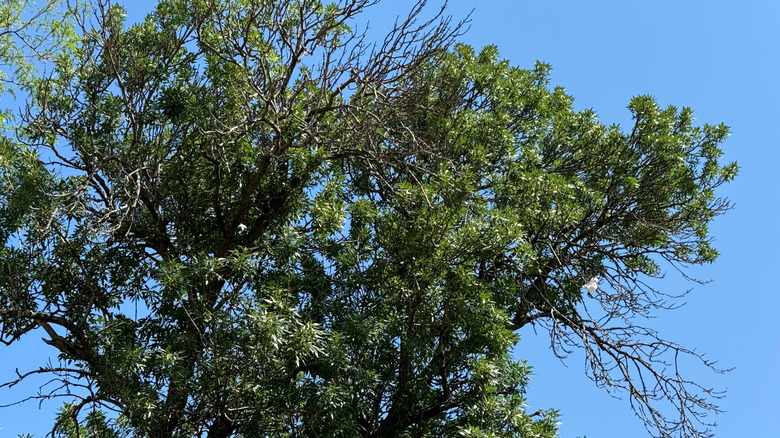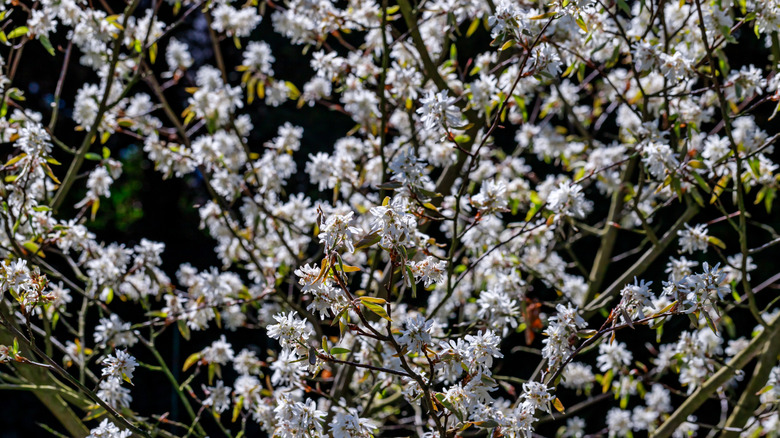11 Trees That Will Outgrow A Small Yard, And 11 Better Alternatives To Consider
When you're roaming through the never-ending rows of gorgeous specimens in your local nursery, it's so easy to get caught up in their beauty and make an instant purchase. But this can prove costly in the long run if you haven't been paying attention to their mature size — many of these itty-bitty trees can grow quite tall, after all. While their large size won't be a problem, or may even be appreciated, were it a huge space, this isn't the case with small yards. In such restrained spaces, anything over 30 feet tall is usually too tall and sure to overpower the design. They may leave you calling the pros to come prune the tree (or replace it if your neighbors complain enough).
So, to ensure you don't make the folly of falling for trees that, albeit magnificent, will certainly outgrow small yards, below is a ready list of trees to steer clear of. These include the likes of weeping willows, tulip poplars, eastern white pines, black locust, American hollies, and many more, as you'll discover shortly. Accordingly, we've also discussed suitable replacements that match your original selection on their cultural requirements, form, or wildlife value, while being relatively easy to maintain.
Avoid: Weeping willow
Weeping willow (Salix babylonica) is a fast-growing ornamental tree that can reach 40 feet tall and wide, thus overwhelming small yards. While you could prune the tree to a more manageable height, it will cost the tree its pendulous form — the primary reason it's planted. Besides, weeping willows can become problematic due to their shallow roots, which may infiltrate underground utilities, raise pavements, and complicate gardening underneath their canopy. Weeping willows litter the ground with shed leaves and limbs, as they can't withstand heavy winds or sleet. They're also prone to several diseases and pests.
Better alternative: Weeping Higan cherry
To enjoy a comparable weeping form, sans the size overload present in weeping willows, grow weeping higan cherry (Prunus x subhirtella Snow Fountains 'Snozofam') instead. It usually grows about 15 feet tall and half as wide, though you may also find grafted variations that stand about 6 feet tall. Weeping Higan cherries look attractive year-round, popping out pink buds in spring that unfurl into pristine white petals. After shedding, these petals carpet the ground beautifully, while the foliage grows red in the fall. The weeping higan cherry is hardy in zones 5 through 8 and is relatively pest and disease-free.
Avoid: Tulip poplar
You may be considering planting tulip poplar to encourage hummingbirds to flock to your yard, but this tree is a misfit if the area is limited. Botanically called Liriodendron tulipifera, tulip poplar can grow nearly 120 feet tall and half as wide, and can dwarf the space. While you could prune it to a shorter height, you'll need to do so every couple of years to offset its fast growth rate. Tulip poplar attracts a legion of aphids and scales that drip honeydew, messing the ground underneath. Poor resilience to heat, drought, and compaction makes it a poor choice in urban settings.
Better alternative: Sweet bay magnolia
To keep the hummingbirds coming without having the plants outgrow your space, grow sweet bay magnolia (Magnolia virginiana) instead. Plenty of its cultivars, including 'Emerald Tower,' 'Henry Hicks,' 'Northern Belle,' and 'Tensaw' remain under 25 feet. Naturally found in the eastern U.S., sweetbay magnolia can be successfully grown in zones 5 to 10 outside its native area, though it requires winter protection in the northern ranges. Expect waxy, white flowers to make an appearance mid-spring and intermittently until frost. Be sure to site in acidic, fertile soils, or the foliage will contract chlorosis.
Avoid: Sycamore
Sycamore (Platanus occidentalis) trees can grow over 75 feet tall with similar spreads. This makes them unsuitable for small lots. Susceptibility to anthracnose, which defoliates the tree in spring, is another downside. Besides anthracnose, sycamores also fall prey to a whole lot of pests, including borers and the much-despised invasive Japanese beetles, which are difficult to keep out of the garden. Through the constant shedding of bark, leaves, and seed balls, sycamore trees quickly overwhelm the area and cause major maintenance headaches.
Better alternative: Dwarf hard maple
As sycamores can be confused with northern sugar or hard maple (Acer saccharum) trees, consider utilizing their shorter cultivars as replacements. In narrow spaces, opt for 'Barrett Cole,' which is commercially sold as Apollo sugar maple, that features a columnar form, stretching 10 feet wide and reaching 30 feet high. It can be successfully grown in zones 4 through 8, tolerates summer heat without breaking a sweat, and adapts to average soils so long they drain well and aren't unduly compacted. Plant in full-to-part sun and enjoy its gorgeous red or bronze fall colors. 'Natchez' or 'Shawnee' are other dwarf options.
Avoid: Eastern white pine
Granted, eastern white pine (Pinus strobus) is an attractive ornamental that ages like fine wine over the years. However, its large size — nearly 80 feet high at maturity and half the spread — paired with a fast growth rate, assuredly leads to any small space looking cramped and poky. They're also highly flammable, which makes them unsafe inside the home's defensible zone. Eastern white pines are highly susceptible to blister rust, which can kill them. White pine weevils, shoot borers, pine sawflies, and bark beetles also attack the tree regularly, which can make their upkeep immensely difficult.
Better alternative: Dark American arborvitae
Dark American arborvitae (Thuja occidentalis 'Nigra') is a suitable alternative to eastern white pine. It grows about 10 feet wide and thrice as tall and won't usually require any hard pruning to maintain its form. Its dense canopy reliably holds its color through the winter, which makes this tree great for a living privacy fence. It can be grown in zones 3 through 7 with full-to-part sun exposure. Also called dark green white cedar, 'Nigra' adapts to most pH types and compaction levels, though you must consistently keep the soil moist to maintain plant vigor.
Avoid: Lombardy poplar
If the narrow waist on Lombardy poplar (Populus nigra) has you thinking that it could work in a small garden, reconsider. It grows quickly, reaching nearly 70 feet tall in optimal conditions. Plus, it sends across suckers, whose management can be a pain when they colonize the adjoining area. They're also short-lived, partly attributable to their appeal to bad insects, including borers. Planted in a hot, humid environment, they contract cankers, which can prematurely kill them. Cottony seeds, pollen, and broken limbs are other concerns, as they saddle homeowners with non-stop cleanup.
Better alternative: 'Sky Pencil' holly
If you like Lombardy poplars for their columnar form, switch them out for 'Sky Pencil' holly (Ilex crenata 'Sky Pencil') — you won't even need to prune the plant to maintain its shape. 'Sky Pencil' actually thrives in clay soils, though it tolerates dry conditions just as well, except during extended droughts. Avoid growing it in alkaline soils, or the foliage will discolor. Save for spider mites, it doesn't attract pests or diseases. It's cold hardy only up to zone 5, and can't tolerate the heat and humidity from zone 8 and south. It is also invasive in Georgia and Virginia.
Avoid: Siberian elm
Siberian elms (Ulmus pumila) may withstand Dutch Elm disease, droughts, and low fertility with fervor, but that still doesn't make them appropriate for small yards. Most specimens grow upwards of 50 feet with just as wide canopies that can dominate the space. Since they send out clonal suckers, they monopolize the area and outcompete other plantings. Indeed, Siberian elm has naturalized in the wild in 25 U.S. states and is an invasive species of elm tree you must avoid planting at all costs. Owing to their fast growth, Siberian elms develop weak limbs that easily break and clutter the ground.
Better alternative: Flowering dogwood
Rather than Siberian elms, consider growing flowering dogwood (Cornus Florida). It's a small, ornamental tree that tops out at 25 feet, and in addition, has a few dwarf cultivars, such as 'Pygmy' and 'Suwanee Squat'. Plus, it's indigenous to the eastern U.S. and is popular with the local butterflies who use its foliage for egg-laying and fruit-eating birds. Dogwoods desire full sun exposure but will appreciate some shade and mulch where the afternoons are very hot. Give them organically rich, acidic soils in zones 5 to 9. Opt for disease-resistant cultivars to reduce overall maintenance.
Avoid: Norway maple
The easy adaptability of Norway maple (Acer platanoides) or the sheer beauty of its purple-leaved cultivar 'Crimson King' has made it a popular choice in residential landscapes. However, where real estate is at a premium, these European introductions are a miscast, with their mature sizes ranging between 40 feet and 90 feet, depending on how favorable their growth conditions are. Their surface-level roots can damage foundations, while prolific self-seeding makes them weedy on the property and invasive across several U.S. states. They prevent grass or ornamentals from growing underneath, which can be a bummer in limited spaces.
Better alternative: Japanese tree lilac
A good alternative to the invasive Norway maple tree is Japanese tree lilac (Syringa reticulata). Standard species grow over 25 feet tall and 15 feet wide, but varieties like Amur Lilac and Peking Lilac peak at 8 feet and 20 feet, respectively. Depend on these lilacs to provide musky-smelling, white flowers in June, which will draw in hummingbirds and butterflies to your yard. They show resistance to various pests and diseases, including borers, scales, and powdery mildew, and are overall easy to care for. Like Norway maple, Japanese tree lilac is hardy in zones 3 through 7.
Avoid: Black locust
On the surface, black locust (Robinia pseudoacacia) isn't that bad of a choice, especially around tricky sites, as it helps fix nitrogen and even raises their wildlife value by hosting butterfly eggs, bees, and nesting birds. However, this tree can grow about 50 feet tall and 35 feet wide, which can cramp an already small lot. What's worse, it has a weedy nature. Several shoot suckers are thrown out willy-nilly, which prevents other ornamentals from blooming and raises the time and effort expended in regular maintenance. It may also be invasive in your area if you live in the Midwest.
Better alternative: American plum
To benefit from a tough, adaptable plant that's also popular with the local wildlife, look toward American plum (Prunus americana). It readily grows in average, well-draining soils in zones 3 to 8. By maturity, it measures under 25 feet, top and across. Although its fruits won't taste the best, you may process them into preserves or leave them for the songbirds and small mammals. However, do note that their leaves, seeds, and stems are poisonous on consumption. American plums require full-to-part sun exposure and are heat- and drought-tolerant.
Avoid: Callery pear
Fast-growing Callery pear (Pyrus calleryana) and its hybrid cultivar 'Bradford' pear are unsuitable in small yards. These invasive trees reach nearly 50 feet high and 35 feet across in a short span of time. As if their size wasn't unwieldy enough, they also infuse the area with an unpleasant odor when they're in bloom, which is far more pronounced in a limited space. Their limbs are weak and break easily as the trees mature or are exposed to icy winds, raising upkeep costs. They're also proficient at self-seeding, which becomes problematic with their seedlings competing with the existing plantations.
Better alternative: American fringetree
Rather than giving Callery pears any real estate, pivot to American fringetree (Chionanthus virginicus). These ornamental trees are a more practical size, growing between 12 feet and 20 feet, up and across. Sweetly-scented, creamy white blooms appear in April and May, attracting lots of pollinators. Summer-borne bluish-black berries see the birds through the fall. American fringetrees adapt well to urban settings, given their tolerance for pollution and drought. They also withstand deer browsing and can be grown in zones 3 to 9. Offer them full sun for the best blooms, though light shading will improve foliage colors.
Avoid: American holly
This may disappoint a few native plant enthusiasts, but American holly (Ilex opaca) doesn't belong in restrained yards. By the time it fully matures — no matter how slowly — this tree will have shot up nearly 60 feet high, while remaining slimmer at 20 feet. The slender limbs grow close to the ground and reduce clearance. Not to mention, this evergreen specimen is highly flammable and must never be planted too close to your foundation, especially if you live in a wildfire-prone area. Ditch them for their superior holly cousins.
Better alternative: Winterberry holly
Unlike American holly, winterberry holly (Ilex verticillata) is actually fire-resistant and recommended for foundation plantings. Available in many forms, the tallest trees can grow about 15 feet high and similarly wide. Winterberry holly is great in urban settings, as it can deal with compacted soils. If you're looking to reduce water bills, this can be a rewarding addition, as it is drought and heat-tolerant. However, it won't produce fruit if the soil remains dry for extended durations or doesn't have a compatible pollinizer, which may disappoint your backyard birds. From full sun to deep shade, it tolerates all light conditions.
Avoid: Green ash
Despite its wide flexibility to myriad conditions, small yard owners must avoid giving their limited acreage to green ash (Fraxinus pennsylvanica). For starters, it can grow over 50 feet tall and 35 feet wide — the rapid growth rate doesn't help either. Worse still, green ash is vulnerable to emerald ash borers, an invasive beetle. These insects are hard to manage, eat through the wood, and kill these trees within five years. As a result, you might soon need to replace them, which can be expensive.
Better alternative: Downy serviceberry
Suitable alternatives to ash trees include downy serviceberry (Amelanchier arborea). These eastern U.S. natives are flexible about their settings, tolerating all soil textures, from sand to clay, with good drainage. They grow in full sun or light shade and can withstand deer pressure to a limited extent. Expect butterflies and bees to gather around their pink flowers during spring, while the birds will be lured in to taste the sweet berries that arrive later in summer. Downy serviceberry is right at home in zones 4 to 9. However, you'll need to watch for suckers and eliminate them timely for a tidy space.
